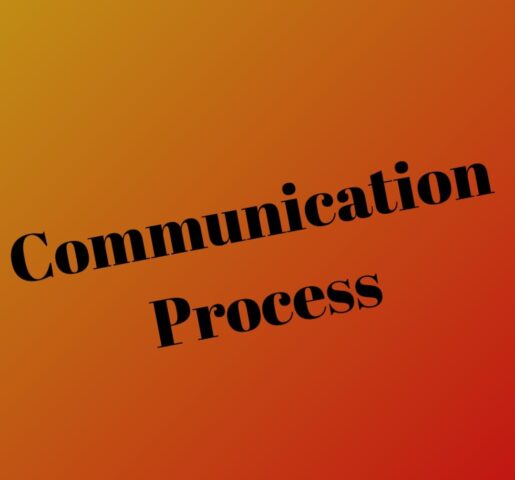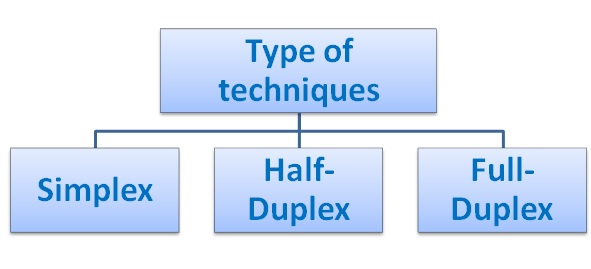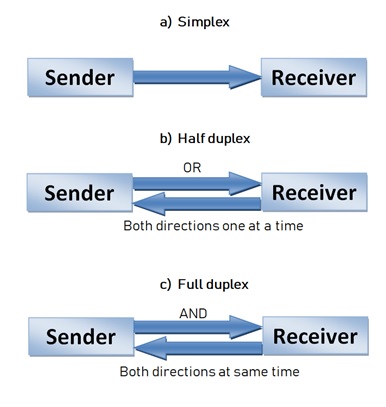
The following article gives detailed information about elements of communication process and communication flow occur in computer network. All the elements of communication process occurred are explained in this process.
Elements of communication process-
It is the passing of any information from sender to the receiver through a selected channel i.e. medium.
Communication Process is a cycle which starts from the Sender and ends with Feedback from the Receiver again to the Sender.
Following factors affects the data communication:
- Delivery of message
- Time required delivering the message
- Accuracy of data delivered till receiver
Components included in Data Communication:

The following are the components which actively participate while data transferring in the communication system.
1) Sender :
Sender is the person who sends an information or message.
2) Thought, Ideas :
Idea and Thought means an idea that first comes to the mind of the Sender as well as a thought or opinion that he sends further.
3) Encoding :
When an idea or thought comes to the sender’s mind, he first encodes it i.e. prepares that thought and ideas in a format that the receiver can understand.
4) Message:
First of all, whatever thoughts, feelings and ideas come to the mind of the sender, he sends all those thoughts, feelings, ideas, opinions to the receiver in the format of information and data. That is called message.
5) Channel :
Channel is a medium through which Sender sends his message to Receiver.
In Written Communication, Letter, Report, Email, Instant Message, etc. Channels are used.
In oral communication, channels like video conferencing app, mobile, telephone etc. are used to send messages.
6) Receiver :
Receiver is the person to whom information, data and message are sent from the sender.
In short, Receiver is a person to whom the Sender is sending the Idea and Thought that comes to his mind first and thought or his opinion in the format of Information and Data.
7) Decoding :
In decoding, the receiver is decoding the message from the sender, i.e. properly understanding it.
8) Feedback :
Feedback is a very crucial and final part in the communication process. In which the receiver sends the positive or negative feedback to the sender after Enode the message from the sender.
9) Noise, Disturbance:
Noise, Disturbance is a Barrier as well as an Obstacle which hinders communication between both the Sender and the Receiver.
This barrier includes Noise, Sound, Pollution etc.
Data Flow Techniques
For transmitting the data from sender to receiver through medium, various data flow techniques are used.
These include:
- Simplex transmission
- Half-duplex Transmission
- Full-duplex transmission

1. Simplex transmission:
In this transmission, data flow occurs only in one direction. That means from the sending device to the receiving device.
This type of transmission is used only when the sending device does not require a response from the receiving device.
Examples: Security systems and fire alarms.
2. Half-duplex Transmission:
In this transmission, data flow occur in one direction either from the sender to the receiver device, or from the receiver to the sender device back, but only in one direction at a time.
Examples: Fax machines, credit card verification systems, and ATM (automatic teller machines).
3. Full-duplex transmission:
In this transmission, data flow occurs in both directions at the same time that means from the sender to the receiver device, and again from the receiver to the sender device back at a time.
Examples: Telephone.

Related Articles:
- Basic Accounting Concepts Part 1
communication cyclecommunication flowcommunication is a two way processdata communication and networkingelements of communication processexplain the process of communicationnetwork componentsnetwork drivesender in communication
Elements of communication process |communication flow
2022-11-23
Computer Basics
No Comments
Admin
The following article gives detailed information about elements of communication process and communication flow occur in computer network. All the elements of communication process occurred are explained in this process.
Elements of communication process-
It is the passing of any information from sender to the receiver through a selected channel i.e. medium.
Communication Process is a cycle which starts from the Sender and ends with Feedback from the Receiver again to the Sender.
Following factors affects the data communication:
Components included in Data Communication:
The following are the components which actively participate while data transferring in the communication system.
1) Sender :
Sender is the person who sends an information or message.
2) Thought, Ideas :
Idea and Thought means an idea that first comes to the mind of the Sender as well as a thought or opinion that he sends further.
3) Encoding :
When an idea or thought comes to the sender’s mind, he first encodes it i.e. prepares that thought and ideas in a format that the receiver can understand.
4) Message:
First of all, whatever thoughts, feelings and ideas come to the mind of the sender, he sends all those thoughts, feelings, ideas, opinions to the receiver in the format of information and data. That is called message.
5) Channel :
Channel is a medium through which Sender sends his message to Receiver.
In Written Communication, Letter, Report, Email, Instant Message, etc. Channels are used.
In oral communication, channels like video conferencing app, mobile, telephone etc. are used to send messages.
6) Receiver :
Receiver is the person to whom information, data and message are sent from the sender.
In short, Receiver is a person to whom the Sender is sending the Idea and Thought that comes to his mind first and thought or his opinion in the format of Information and Data.
7) Decoding :
In decoding, the receiver is decoding the message from the sender, i.e. properly understanding it.
8) Feedback :
Feedback is a very crucial and final part in the communication process. In which the receiver sends the positive or negative feedback to the sender after Enode the message from the sender.
9) Noise, Disturbance:
Noise, Disturbance is a Barrier as well as an Obstacle which hinders communication between both the Sender and the Receiver.
This barrier includes Noise, Sound, Pollution etc.
Data Flow Techniques
For transmitting the data from sender to receiver through medium, various data flow techniques are used.
These include:
1. Simplex transmission:
In this transmission, data flow occurs only in one direction. That means from the sending device to the receiving device.
This type of transmission is used only when the sending device does not require a response from the receiving device.
Examples: Security systems and fire alarms.
2. Half-duplex Transmission:
In this transmission, data flow occur in one direction either from the sender to the receiver device, or from the receiver to the sender device back, but only in one direction at a time.
Examples: Fax machines, credit card verification systems, and ATM (automatic teller machines).
3. Full-duplex transmission:
In this transmission, data flow occurs in both directions at the same time that means from the sender to the receiver device, and again from the receiver to the sender device back at a time.
Examples: Telephone.
Related Articles:
Some More: DBMS/ WT/ DMDW
communication cyclecommunication flowcommunication is a two way processdata communication and networkingelements of communication processexplain the process of communicationnetwork componentsnetwork drivesender in communication